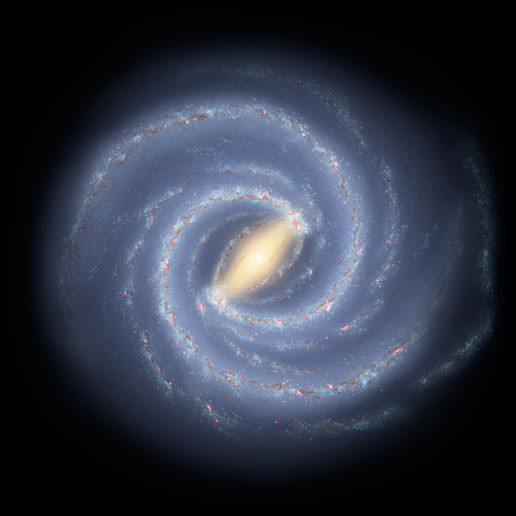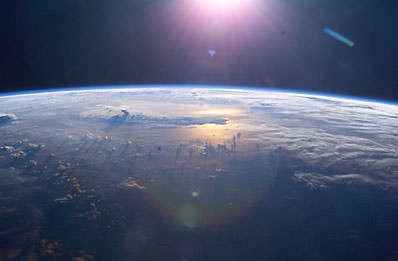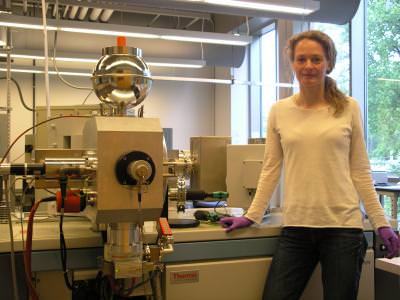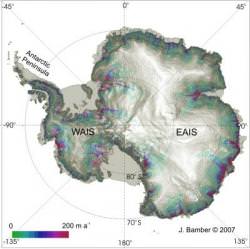[/caption]
Earth’s climate has changed over time, but the cause for the changes has been hotly debated. One idea (Shaviv and Veizer,2003), suggested that perhaps two-thirds to three-fourths of the variance in Earth’s temperature over the past 500 million years may be attributable to when our solar system passes through the spiral arms of the Milky Way galaxy. The evidence seemed to fit: there appears to be a 140 million year cycle of global climate change, and that correlates when our solar system seems to move between spiral arms, too. Or at least it used to. Since 2003 we have revised our map of the galaxy, which changes the estimation of when Earth transits through the spiral arms.
“Although previous work found a correlation between the 140 Myr climate cycle on Earth and the intersection with spiral arms,” write researchers Adrian Melott, Andrew Overholt, and Martin Pohl, “with new data on the structure of the galaxy, this correlation disappears.”
On Earth, the 140 million year cycle is estimated from the timing of ice ages and abundances of fossils.
The basic idea of the earlier research was that when the solar system journeys through the Milky Way’s spiral arms the event rate of cosmic rays in the Earth’s atmosphere greatly increases, since the number of supernovae in spiral arms is clearly much larger than in between the arms. This could affect cloud formation on Earth and therefore strength of greenhouse effect.
But that assumed the Milky Way had four arms, and was less massive than new calculations show. In 2008, new information from the Spitzer Space Telescope helped astronomers conclude that the Milky Way consisted of two spiral arms and a large central bar. Additionally, in 2009 Spitzer data helped scientists conclude that our galaxy is much more massive than originally thought, and is moving faster than originally estimated.

So just when has Earth passed through the galactic arms? With changing estimations of mass and smaller number of arms, no one can be absolutely sure. But Melott and his team have compared the times of transit between regions of the new galactic map with changes in Earth’s climate and found that the 140 million year correlations no longer apply.
The team also says the 140 million year cycle cannot be made to match up with any cyclical movement of the solar system through the galaxy.
“The only periodic trend that can be found with the new data is the relative orbital period of our solar system,” the team writes in their paper, “relative to the previously assumed pattern speed around the galactic plane, which is slightly larger than 500 Myr. Though one could create varying periodic trends by changing this pattern speed, the orbital period relative to the galactic pattern could never reach the 140 Myr time as this is less than the orbital period itself, meaning the pattern and the Sun would be required to move in opposite directions.”
So, the researchers conclude, the solar system passing through the plane of the galactic arms could have no direct tie with past climate change on Earth.
The team’s paper can be read here.
Graphic caption: Red vertical lines represent the midpoints of the last seven ice ages, which don’t correlate with the passage of the solar system through the galactic plane. Credit Melott, Overholt and Pohl.
Source: arXiv, Technology Review Blog







